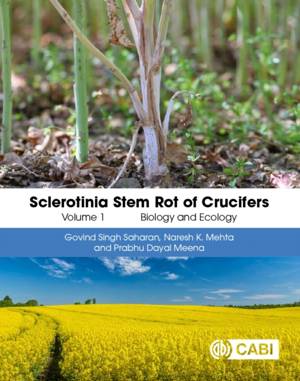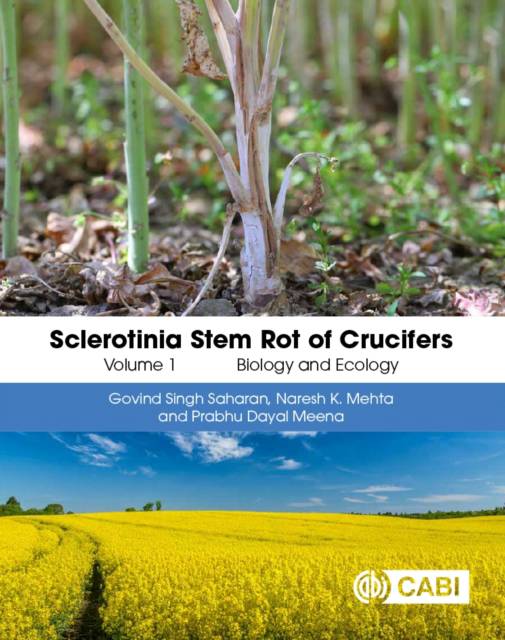
- Afhalen na 1 uur in een winkel met voorraad
- Gratis thuislevering in België vanaf € 30
- Ruim aanbod met 7 miljoen producten
- Afhalen na 1 uur in een winkel met voorraad
- Gratis thuislevering in België vanaf € 30
- Ruim aanbod met 7 miljoen producten
Zoeken
Sclerotinia Stem Rot of Crucifers, Volume 1
Biology and Ecology
Govind Singh Saharan, Naresh Kumar Mehta, Prabhu Dayal Meena
Hardcover | Engels
€ 301,45
+ 602 punten
Omschrijving
The plant pathogenic fungus Sclerotinia sclerotiorum causes white stem rot of crucifers and is considered one of the most destructive and cosmopolitan of plant pathogens. It infects over 900 species of plants worldwide including important field crops, cash crops, vegetable crops, fruit crops, ornamental plants, trees, shrubs and numerous weeds. Sclerotinia is widely distributed throughout temperate regions but also occurs in more arid areas. A lack of adequate host genetic resistance, the wide host range of the pathogen, and the difficulty in managing the disease all contribute to Sclerotinia's extensive crop damage within both broad acre and horticultural crops.Recent advances in genomics and sequences available on Brassica species and S. sclerotiorum have provided unique information on the molecular mechanisms of host-pathogen interactions. This has revealed pathogen biology, pathogenesis, effector genes and molecular mechanisms of host resistance in Brassica crops.This first volume, Biology and Ecology, covers aspects of: . Historical developments.. Geographical distribution and host range.. The pathogen - Sclerotinia.. Reproduction, reproductive structures, and ultra-structures.. The disease, symptomatology, assessment, and economic importance.. Infection pathogenesis and molecular mechanisms.. Biochemistry and physiology of host-pathogen interactions.. Future research priorities of Sclerotinia on biology and ecology.
Specificaties
Betrokkenen
- Auteur(s):
- Uitgeverij:
Inhoud
- Aantal bladzijden:
- 496
- Taal:
- Engels
Eigenschappen
- Productcode (EAN):
- 9781800629578
- Verschijningsdatum:
- 7/11/2025
- Uitvoering:
- Hardcover
- Formaat:
- Genaaid
- Afmetingen:
- 172 mm x 244 mm

Alleen bij Standaard Boekhandel
+ 602 punten op je klantenkaart van Standaard Boekhandel
Beoordelingen
We publiceren alleen reviews die voldoen aan de voorwaarden voor reviews. Bekijk onze voorwaarden voor reviews.








